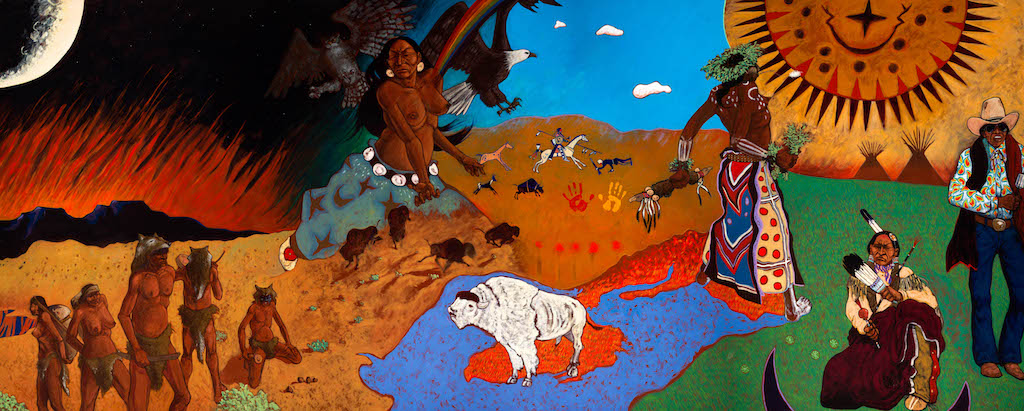T. C. Cannon was a veteran of the 1968 Tet Offensive, a revolutionary and a Native American.
He was also an artist who, in just a few short years during the late 1960s and early 1970s, turned the public perception of Native American art on its head.
“He studied art, he loved music, he was a deep thinker and he was very educated on his own terms,” says Karen Kramer, Curator of Native American and Oceanic Art and Culture at the Peabody Essex Museum. “That opened his lens beyond how a Western education frames everything – he was highly educated in cultural traditions.”
The Salem, Mass. museum is about to open a comprehensive exhibition of Cannon’s bold and visionary work. T.C. Cannon: At the Edge of America ౼ on view March 3 through June 10, 2018 ౼ explores the dynamic creative range and legacy of an artist whose life was cut short in an automobile accident at age 31. It includes nearly 90 works, including 30 major paintings, works on paper, poetry and musical recordings.
And it is invigorating. “He represented a new form or a not-so-new form of American mythology,” she says. “He allows us to explore more broadly what it means to be an American – something we’re still grappling with now.”
Up until T.C. Cannon, the Native American experience was virtually nonexistent in the larger canon of American art. He inserted a voice and presence, front and center, where before it had been largely absent. “He was probing at the hot topics of his time, like land rights, cultural appropriation, social justice and ethnic identity,” she says. “These topics are extremely relevant 50 years later.”
And he did all that with the skill and talent of a gifted artist. “There were three things happening: the main components – a bold use of color, a dynamic relationship between foreground background and a mashup of native and non-native elements,” she says.
For example, there’s his painting of Two Guns Arikara, where a native warrior is sitting on a Victorian chair wearing a mix of native and non-native clothing. He has on U.S. military scout pants and a white shirt, with Native American copper armbands and a bone necklace choker.
“It’s rich, and framed by the tumultuous energy prevalent in the culture of the 1960s and ‘70s in America,” she says. “That was fueling a really powerful output.”
It’s also compelling art. Go see it.
For more, go here.
[slideshow id=1872]



